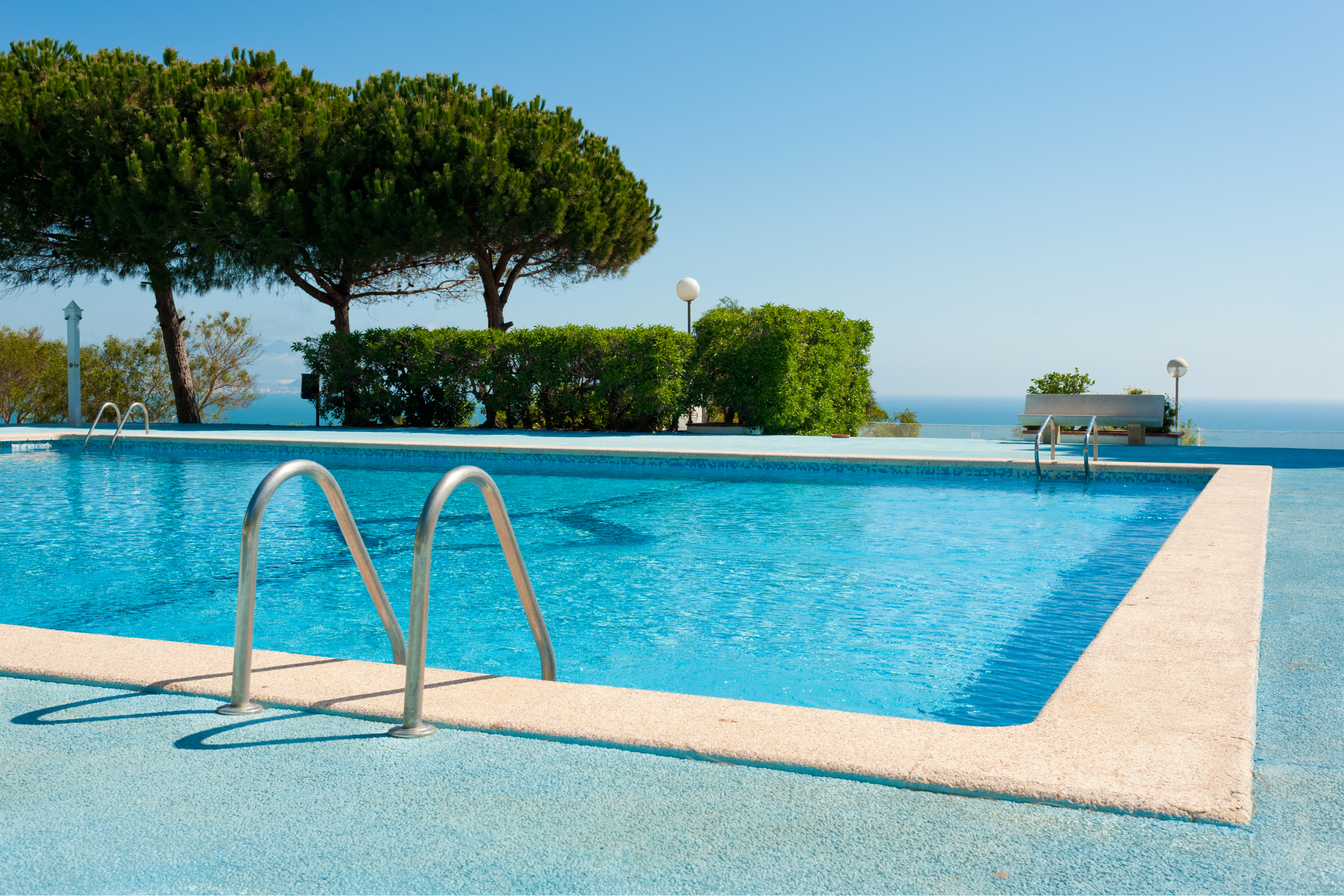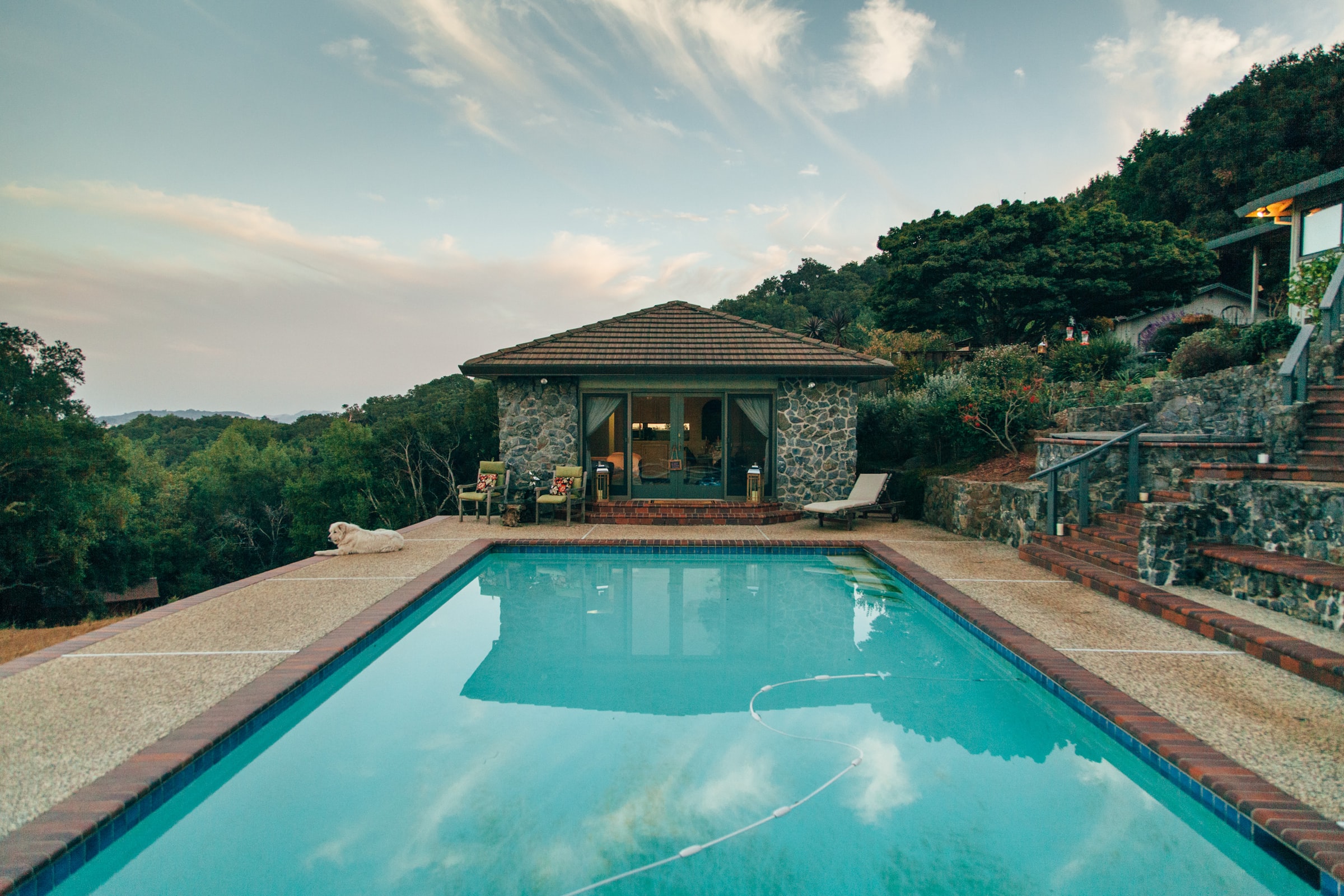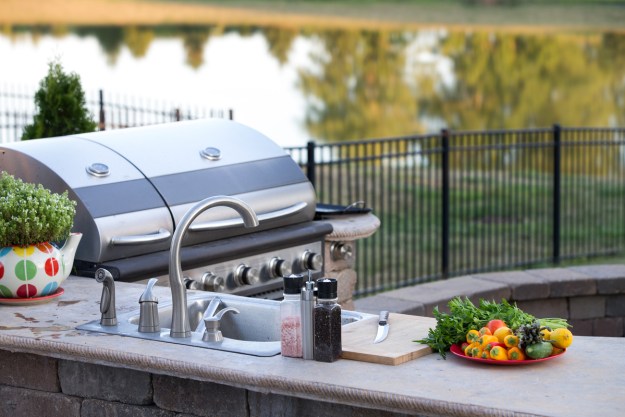As a homeowner, at some point you’ll likely find yourself wanting a swimming pool. The most important thing to keep in mind when looking is the pool size. Some areas are better suited for a certain size than others, and you don’t want to crowd a majority of your yard with a pool. (Or maybe you do, and that’s fine, too!) Standard residential pool sizes will vary from shape to shape, and you’ll also need to consider whether you want an in-ground or above-ground pool.

What are the standard pool sizes and shapes?
Above-ground pools come in circular, rectangular, and oval shapes. Sizes vary from shape to shape. Circular above-ground pools start at a 12-foot diameter and can be as big as 33 feet. Rectangular above-ground pools start at 9 x 18 and get as large as 15 x 25, whereas oval shapes start at 12 x 24 and get as large as 21 x 41. Remember: Above-ground pools are different from the ones you inflate every summer and take down every winter. These will be a permanent installation in your yard, and because the sizes have such a wide range, it’s important to decide what will fit well in your space and what size is ideal for you.
In-ground pools are most often rectangular, though they can also be in the shapes of circles, squares, ovals, and kidney beans. Rectangular and similarly shaped in-ground pools, like kidney and square, have three sizes that are considered standard: 16 x 32, 15 x 36, and 20 x 40. If you’re interested in a size other than these, you can always check and see if it’s one that can be made. For circular in-ground pools, it’s safe to assume that standard sizes would start around 16 feet in diameter.

In-ground vs. above-ground pools
Other than shape and size, this will be the biggest choice you make when deciding what kind of pool you want to get. Above-ground pools offer a lot of benefit, especially for people who don’t have an in-ground pool in their budget. In-ground pools tend to lean on the more expensive side, as they require more work. You’ll need to excavate the space for your in-ground pool — which is often 6-feet deep at its deepest point — and make sure you have all the permits and safety requirements met for construction.
Above-ground pools can often be done with a kit. This can go two ways. Often, the pool shop you buy it from will have an option to do the installation for you. All you need is a levelled-out space of ground, which is much easier to accomplish than a full excavation. If you’re a handy enough person, you can also opt to put the pool together yourself and save a bit on cost (which is a helpful option, so long as you’re sure you can do it and have extra help as needed).
The other concern is usually safety. With an above-ground pool, the sides extend as high as the depth of the pool — which, unlike an in-ground pool, is often one depth (4 to 5 feet) that you can stand in — and provide a barrier to keep kids and pets from accidentally falling in. With an in-ground pool, there’s potentially more risk of that happening if you aren’t prepared. Because of that, in-ground pools are often seen in fenced-in areas with locked gates that pets can’t get through and kids can’t open until they’re old enough to know how to be safe around the water.
How do you know which pool to choose?
It’s a matter of considering all the above factors. With each type of pool, you have your choice of shape and size depending on the space you have to work with and the look you want for your pool. If your budget is a bit tighter, it may be best to opt for an above-ground pool that doesn’t require excavation or additional details, like a fence to increase safety. If you have the money to spare and love the look and feel of an in-ground pool, they do stand out less in the space and offer more variety as far as depth and shape.
Something to consider is how long you plan to spend in the current space. If it’s an intermediate home, you may want to opt for an above-ground pool that will cost less money and wait until you have your dream home to build the in-ground pool. Ultimately, it’s what works best for you, your space, and where you are in your life.
Editors' Recommendations
- What to know about BBQ tool storage: How to store your outdoor grill this winter
- Do grow lights really work? How to make sure you’re not wasting your money
- Designing your poolside landscape? Avoid these plants
- How to install an above-ground pool liner safely
- Everything you should consider before painting your pool



